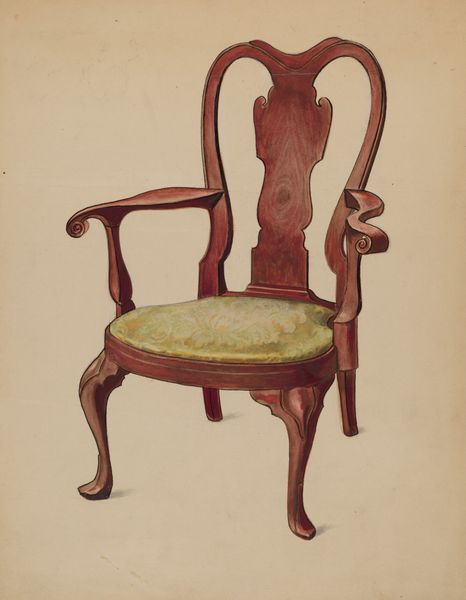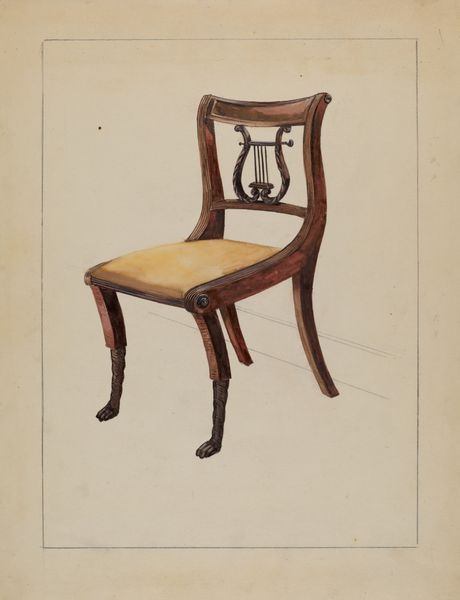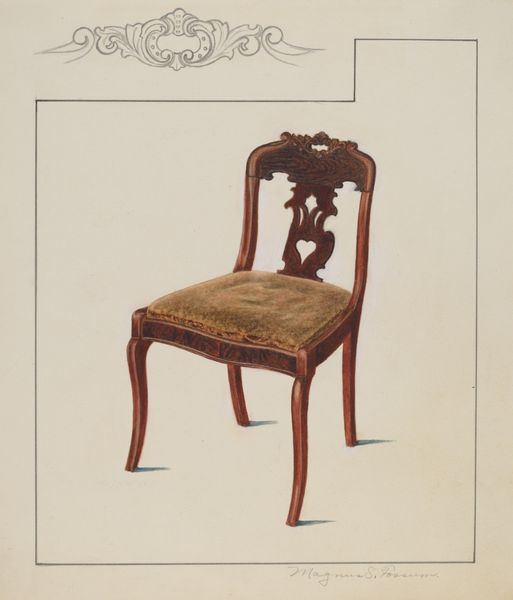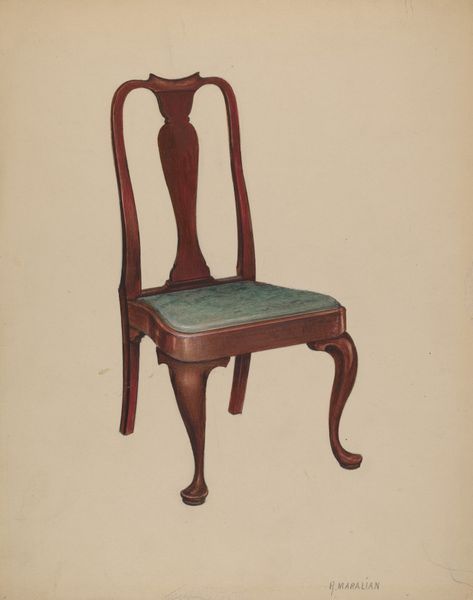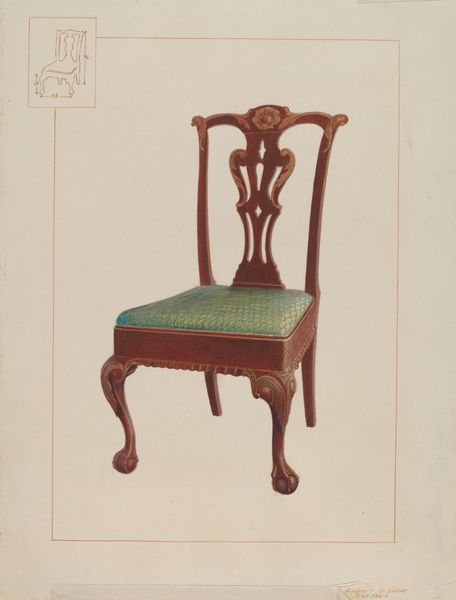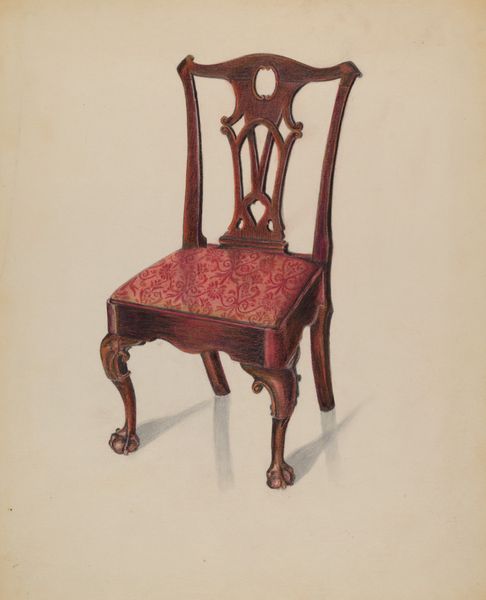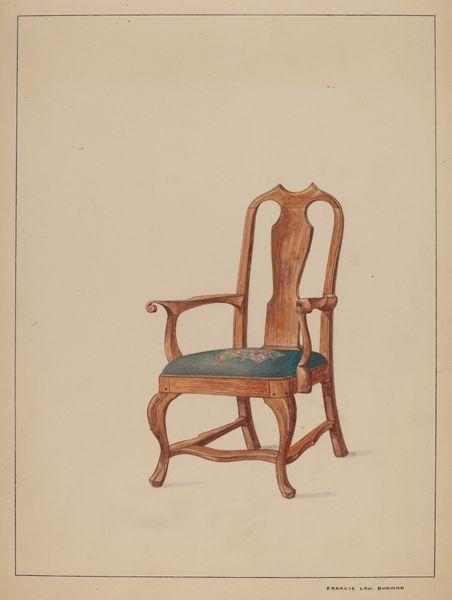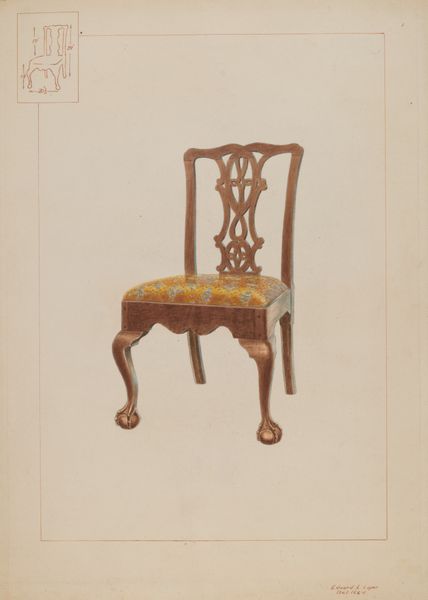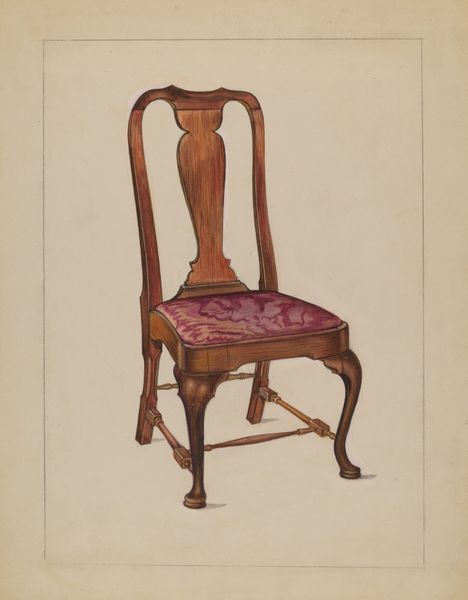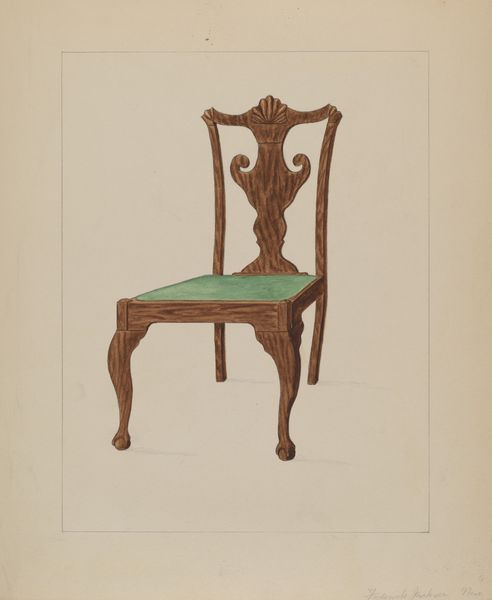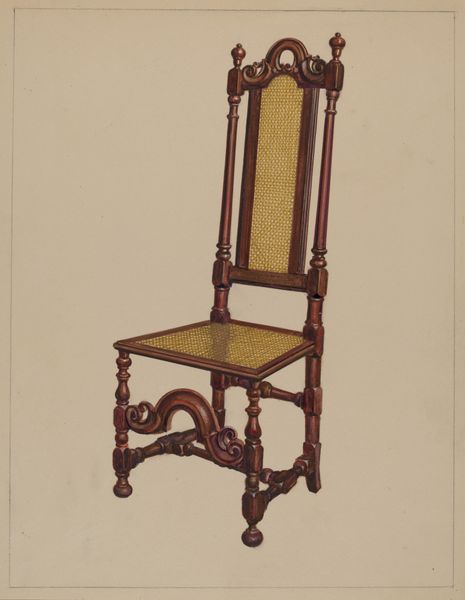
drawing, watercolor
#
drawing
#
watercolor
#
academic-art
#
watercolor
Dimensions: overall: 29.2 x 22.8 cm (11 1/2 x 9 in.) Original IAD Object: 39 1/2"high, 26 3/4"wide, 18"deep.
Copyright: National Gallery of Art: CC0 1.0
Editor: Here we have Rolland Livingstone’s “Armchair,” made around 1936, using watercolor and drawing. The realism is compelling. I’m curious, what strikes you most about the artist's choice to depict this ordinary piece of furniture? Curator: The rendering, particularly the skillful modulation of light and shadow across the complex curvilinear forms, compels my interest. Notice the intricate detailing on the legs, terminating in what appears to be a claw-and-ball foot—a motif that suggests a certain formality. Editor: The way the light hits it definitely emphasizes all those details. Is that part of why the artist chose watercolor, for the transparency? Curator: Precisely. Watercolour allows for subtle gradations, lending a luminous quality to the wooden surfaces. Note how the artist meticulously builds up the tones, delineating the contours and capturing the textural nuances of the material. Semiotically, this chair signifies more than mere utility. Consider how its form echoes historical precedents in furniture design. Editor: That makes sense; the style seems very traditional. So, even just focusing on the elements, we can read a history here? Curator: Indubitably. It evokes connotations of status and refined taste. Consider also the composition; the artist's strategic placement of the object against a neutral ground isolates it, transforming the mundane into an object of aesthetic contemplation. What aspects of its composition draw your attention? Editor: I appreciate how the formal approach makes you consider every line and shading decision; thanks! Curator: My pleasure. Analyzing the formal aspects certainly reveals unexpected depths.
Comments
No comments
Be the first to comment and join the conversation on the ultimate creative platform.
